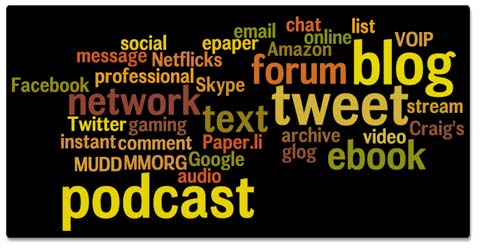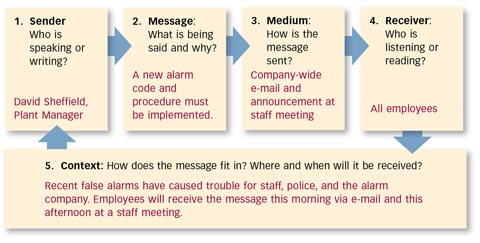Literacy skills help students gain knowledge through reading as well as using media and technology. These skills also help students create knowledge through writing as well as developing media and technology.
Information Literacy
Students need to be able to work effectively with information, using it at all levels of Bloom's Taxonomy (remembering, understanding, applying, analyzing, evaluating, and creating). Information literacy involves traditional skills such as reading, researching, and writing; but new ways to read and write have also introduced new skills:
- Consuming information: The current excess of information requires students to gain new skills in handling it. When most information came through official publications like books, newspapers, magazines, and television shows, students encountered data that had been prepared by professionals. Now, much information is prepared by amateurs. Some of that work is reliable, but much is not. Students must take on the role of the editor, checking and cross-checking information, watching for signs of bias, datedness, and errors. Students need to look at all information as the product of a communication situation, with a sender, subject, purpose, medium, receiver, and context.
- Producing information: In the past, students were mostly consumers of information. When they produced information, it was largely for a single reader—the teacher—and was produced for a grade. It was therefore not an authentic communication situation, and students felt that writing was a purely academic activity. Now writing is one of the main ways students communicate. It has real-world applications and consequences. Students need to understand that what they write can do great good or great harm in the real world, and that how they write determines how powerful their words are. Students need to take on the role of professional writers, learning to be effective and ethical producers of information.
Media Literacy
Media literacy involves understanding the many ways that information is produced and distributed. The forms of media have exploded in the last decade and new media arrive every day:

Students' use of media has far outstripped educational use, and students will continue to adopt new media long before teachers can create curricula about it. It is no longer enough to teach students how books, periodicals, and TV shows work. Students need to learn how to critically analyze and evaluate messages coming to them through any medium.

As with information literacy, the key is to recognize the elements of the communication situation—sender, message (subject and purpose), medium, receiver, and context. These elements are constant regardless of the medium used. By broadening the student's perspective to see all media as part of a larger communication situation, we can equip students to effectively receive and send information in any medium. Students must learn to recognize the strengths and weaknesses of each medium and to analyze each message they receive and send.
Technology Literacy
We are living through a technological revolution, with huge changes taking place over brief spans of time. A decade ago, Facebook didn't exist, but now many people could not live without it. The average cellphone is now more powerful than computers from several years ago. We are surrounded by technology, and most of it performs multiple functions. In Growing Up Digital: How the Net Generation Is Changing Your World, Don Tapscott outlines the following eight expectations that students have of technology.
- Freedom to express their views, personalities, and identities
- Ability to customize and personalize technology to their own tastes
- Ability to dig deeper, finding whatever information they want
- Honesty in interactions with others and with organizations
- Fun to be part of learning, work, and socialization as well as entertainment
- Connecting to others and collaborating in everything
- Speed and responsiveness in communication and searching for answers
- Innovation and change, not settling for familiar technologies but seeking and using what is new and better
As you can see, students expect a great deal out of their technologies. You can help them use technology wisely:
- reading Web sites;
- using search engines;
- using map searches;
- accessing videos, podcasts, and feeds;
- evaluating Web resources;
- researching on the Internet;
- e-mailing, chatting, texting, microblogging;
- using social sites;
- visiting virtual worlds;
- blogging and using wikis; and
- using message boards, newsgroups, and VOIP (Skype).
By understanding how to evaluate this new information and how to use these new tools to create effective, well-grounded communication, students can harness the power of new technology and be inspired to learn.